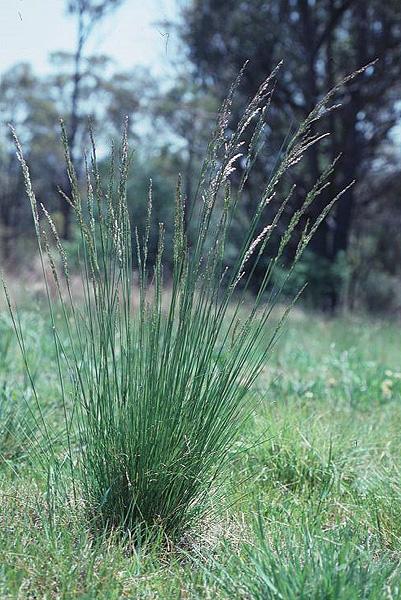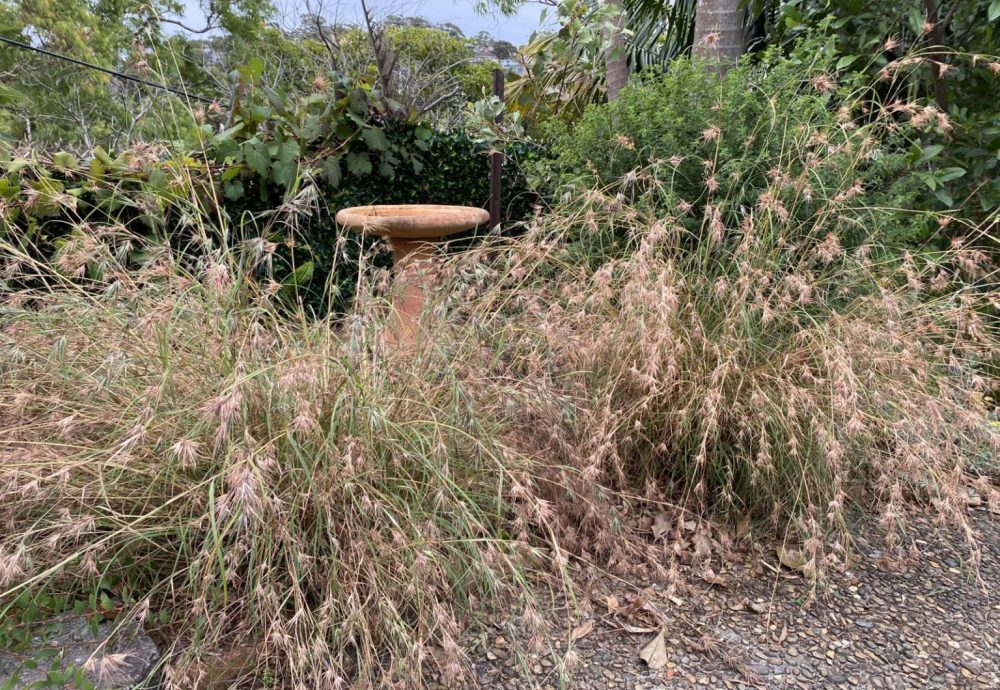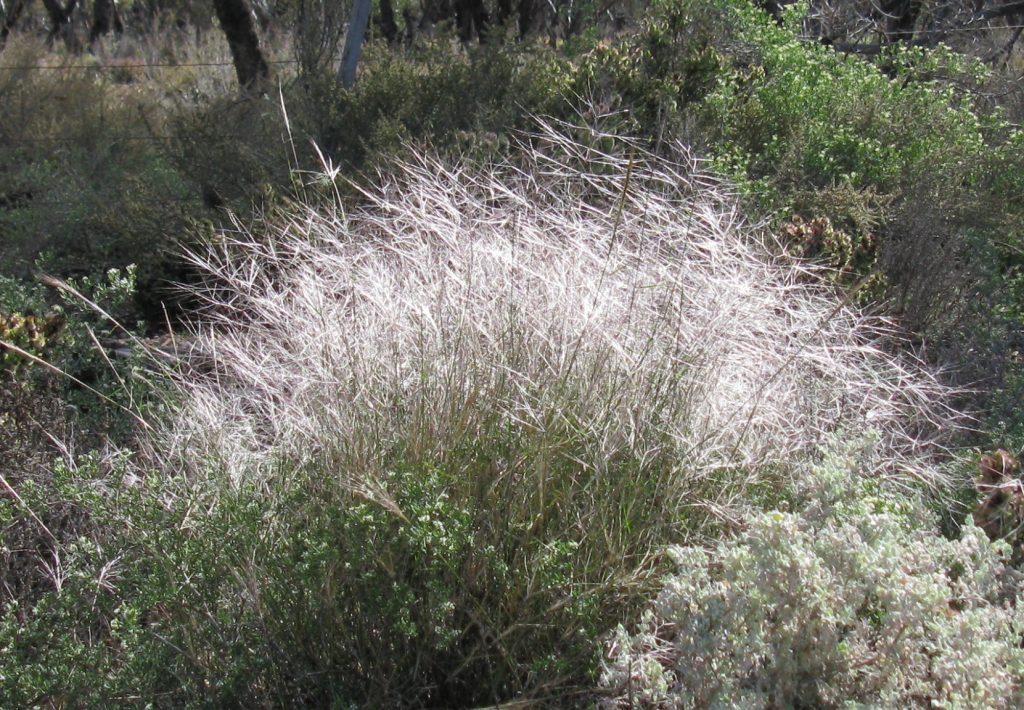Native grasses and grass-like plants can be overlooked as garden plants but they are a wonderfully attractive addition to any garden, with the variety of shapes and colours of their leaves and flower heads. Whether your garden is a bush garden, natural cottage garden, formal garden or whether you’re growing plants in containers or revegetating land, there’s a place for native grasses. One advantage of growing native grasses is that they’re quite well adapted to fairly infertile soils and intermittent droughts. This is clearly a point in their favour in the face of climate change. Another very good reason to plant native grasses is their biodiversity value
Many types of native grasslands and woodlands covered large parts of Australia before colonisation. In southern Australia, most of the land originally covered with those types of vegetation communities is now agricultural land. Very little of those native grassland vegetation communities now exists as, for example, on the Liverpool Plains in NSW. Before European colonisation, that region was treeless grassland but now only 5 % of those grasslands remain. In 2001, they were listed in NSW as endangered and in 2009 nationally as critically endangered. The greatest damage to grassland has occurred in areas of intensive agriculture through the use of irrigation and fertilisers. Some conservative grazing management practices, however, can maintain the biodiversity value of grassland. While grasslands are mostly flat and open, their composition varies and is influenced by various factors, including soil, climate, elevation, past land use and current land management practices. Grasslands contain not only grasses but also a range of small plants, including sedges, lilies and daisies. This variety of plant types makes many of those communities floristically very biodiverse. As those grassland communities are degraded, habitat for fauna is also lost and the diversity of insects, reptiles and birds, for example, may be affected.
With only tiny areas of many types of grassland remaining, it’s important to conserve as much of the genetic variability in the existing plant species as possible. This includes the variability of a particular species over different geographical areas, among different populations within those areas and within each particular population. It’s always best to use plants that have local provenance in gardens and other plantings (i.e. seeds produced by or seedlings grown from plants in the local area).
Local plants have adapted to local conditions and, by using local provenance, you’re helping to conserve those genes for future generations. If you can’t get plants with local provenance, don’t let that deter you, though! Well-thought-out grass plantings will increase the biodiversity of your garden and land. The Australian Plant Society (APS) Central Coast Group has put out a brief species guide as a starting point for residential gardens. There are native nurseries listed on the APS web site. You can buy seed from some large seed supply companies too but the provenance will probably not be known.
Grasses and grass-like plants, such as sedges and rushes, are very versatile and can be used at any scale, from containers on a balcony to landscape-scale revegetation projects, such as on the Cumberland Plain in Sydney. They’ve got lots of advantages, as they’re generally low-maintenance, boost biodiversity, improve soil health and stability and look great as specimen plants, in groups or as borders. There are native grasses suitable for turf as well. On top of all that, they provide habitat and food for a range of animals, from birds to reptiles and insects.
It’s vital to protect the surviving remnants of grassland communities, as these communities are irreplaceable. Rangeland grazing can be compatible with grassland conservation but other more intensive agricultural practices and urban and industrial development are usually not. There are advantages in preserving native grasslands from both ecological and agricultural viewpoints. We all need to keep a close watch on our remaining grasslands to ensure that the intrinsic value of these often low-growing plants is not overlooked. Curran, T. (2023, February 13). The real price of gas: massive Santos pipeline would destroy rare native grasslands. The Conversation
Theme articles:
Containing Grasses. (2020, November 13). Gardening Australia. https://www.abc.net.au/gardening/how-to/containing-grasses/12878492
Curran, T. (2023, February 13). The real price of gas: massive Santos pipeline would destroy rare native grasslands. The Conversation. https://theconversation.com/the-real-price-of-gas-massive-santos-pipeline-would-destroy-rare-native-grasslands-198795



